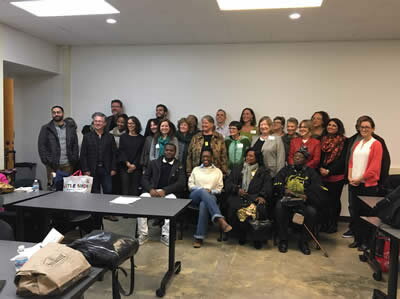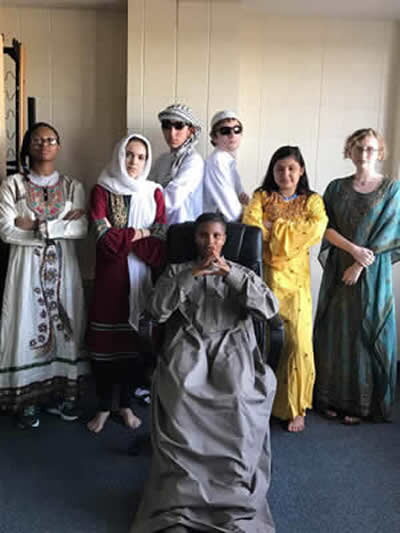
Workshop: Epistemologies of the Contact Zone in Africa
By Jenny Peruski
The Center for African Studies and Krannert Art Museum worked this fall to prepare a workshop centered around the exhibition World on the Horizon: Swahili Arts across the Indian Ocean. Held on 15 November, this workshop brought together approximately thirty museum professionals and academics from various disciplines to consider how exhibitions can be “read” as alternative texts, and how this exhibition fits into broader discourses on itinerancy, hybridity, and oceanic studies. In addition to these more scholarly aims, the workshop had a social atmosphere that encouraged open discussion and the meeting of minds. The combination of free time and structured activities allowed for a dynamic group discussion that developed over the course of the workshop.
The opening introductions highlighted the various backgrounds of attendees, whose reasons for participating ranged from an interest in identity construction in Africa to medicinal practices on the Swahili coast. These diverse experiences lead to in-depth discussions on object selection, museum display practices, and the educational capacity and responsibility of museums to the public. Following these initial discussions, curator Allyson Purpura lead a detailed walk-through of the exhibition. This tour engaged participants in questions about the nature of mobility and what constitutes local versus foreign.
After taking a break for an important afternoon snack, the group returned for small group discussions before coming back together for a final, summary dialogue. Dr. James Brennan encapsulated the overarching concepts of the workshop well by noting how the field of Swahili coast studies has developed since the early twentieth century, notably shifting back and forth between an “outward,” Indian Ocean focus and an “inward,” African focus. This final discussion thus focused not only on Swahili coast material culture, but also the ways in which we come to know and represent different communities. This fabulous workshop helped situate World on the Horizon within discourses about the Swahili coast, Africa, itinerancy, and museum studies. Participants were thoughtful and engaged throughout, leading to an enlightened discussion about the nature of knowledge production in western museum settings.

SILMW 2017
The Summer Institute for Languages of the Muslim World (SILMW) is held every summer at the University of Illinois at Urbana-Champaign. The Summer 2017 institute offered courses in Arabic, Persian, Swahili, and Wolof.
SILMW is an 8-week program, divided into two 4-week semesters. It offers daily language classes as well as a variety of daily co-curricular activities which are meant to enhance the classroom instruction and provide additional channels and contexts in which language can be practiced. In addition, the co-curricular activities provide a wide background related to the culture and traditions of the countries where the languages are spoken. Co-curricular activities include lectures on cultural topics, movies, cooking classes, different workshops, and more.
For the second year in a row, SILMW also held the Summer Intensive Arabic Program for High School Students. The program runs concurrently during the first two weeks of our Institute. This year, it was awarded a generous grant from the Qatar Foundation International which allowed us to welcome more students from across the United States and to provide them with financial assistance.
Towards the end of the program, the students went on a field trip to Chicago. The trip began with a visit to the Oriental Museum at the University of Chicago, followed by lunch at Albawadi Restaurant and a tour of a Mosque/Cultural Center in Bridgeview.Students also had the opportunity to shop at some Arabic stores and there was some extra time to stop by a specialty ice cream shop before returning to campus.
One of the last program events was the SILMW Language Showcase Festival, which instructors, students, and their families and guests attended.The showcase included a presentation about the program, reflections from students and instructors, and most importantly, performances from the students to demonstrate what they learned in their target language during the institute.
